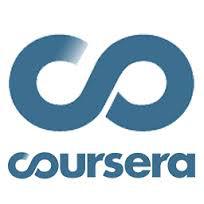Overview of some MOOC Coursera in computer science
Most likely, if you visited Habr and read this article, then at least once in your life, have you heard about MOOC courses.
But if you still have not heard, then MOOC (in Russian it is customary to pronounce “torments”) means “Massive Open Online Course” - a massive open online course. This is a real phenomenon in the education of the XXI century. The New York Times newspaper even called 2012 the “Year of the MOOC” in connection with the appearance on the market of distance education of 3 “whales” - Coursera, Udacity and EdX. A lot of articles are devoted to MOOCs, someone sees in them the future of education , someone, on the contrary, is a threat . They are also trying to predict the “traditional” and “distance” components of the future education.






')
However, in this article I will not discuss the prospects for the development of distance education, but I’ll tell you about my experience with courses on the Coursera platform. These courses will be useful to students studying applied mathematics and computer science, especially data analysis. Much of what these courses gave me, as I later understood, is the knowledge that any self-respecting data researcher should possess (this is how I prefer to translate the Data Scientist profession).
I provide not only a description of the course, but also approximate labor costs and a subjective assessment of the complexity on a 10-point scale.
But if you still have not heard, then MOOC (in Russian it is customary to pronounce “torments”) means “Massive Open Online Course” - a massive open online course. This is a real phenomenon in the education of the XXI century. The New York Times newspaper even called 2012 the “Year of the MOOC” in connection with the appearance on the market of distance education of 3 “whales” - Coursera, Udacity and EdX. A lot of articles are devoted to MOOCs, someone sees in them the future of education , someone, on the contrary, is a threat . They are also trying to predict the “traditional” and “distance” components of the future education.






')
However, in this article I will not discuss the prospects for the development of distance education, but I’ll tell you about my experience with courses on the Coursera platform. These courses will be useful to students studying applied mathematics and computer science, especially data analysis. Much of what these courses gave me, as I later understood, is the knowledge that any self-respecting data researcher should possess (this is how I prefer to translate the Data Scientist profession).
I provide not only a description of the course, but also approximate labor costs and a subjective assessment of the complexity on a 10-point scale.
- Machine Learning (Machine Learning, Stanford University). 4-5 hours / week. Difficulty: 7.
Just a brilliant course, sample. For 10 weeks, the participants do their own hands developing programs for filtering spam, compressing images, recognizing handwritten numbers and recommending films. The working language is Octave, essentially the same Matlab, only free.



- Data Analysis (Data Analysis, Johns Hopkins University). 6-7 h / wk Difficulty: 8.
This course includes peer-reviewed home projects. You write not only the code to solve the problem, but also a full article. The same participants, like you, "blindly" evaluate. I think this is useful for the development of thought skills in English and an intelligible presentation of research results. A very interesting project to predict human behavior (sitting, lying, running, etc.) based on accelerometer and gyroscope readings in a mobile phone.
In addition to this intensive course, Johns Hopkins University also offers an entire specialization of 9 courses in data analysis. The working language is R. - Statistics (Statistics One, Princeton). 3-4 hours / week Difficulty: 5.
One of the most popular courses on Coursera. Everything is explained very accessible. Cons - certificates are not issued (although, of course, knowledge is more important), a lot of glitches in the test verification system. The working language is R. - Algorithms: Construction and Analysis , Part 1 (Algorithms: Design and Analysis, part 1, Stanford). 8-10 h / w Difficulty: 9.
Must-Know. Algorithms for sorting, analyzing graph structures, the complexity of algorithms, the paradigm for creating algorithms, and much more are considered. The most difficult tasks from all the courses that I took. Among other things, it was necessary to program in any language the algorithms of the minimum cut in the graph and the search for strongly related components, as well as the Dijkstra algorithm for finding the shortest path in a weighted graph. The working language is any.

- Social Network Analysis (University of Michigan). 3-4 hours / week Difficulty: 5 (if no additional tasks).
We consider the basic properties of social networks, their types, as well as tasks in which social networks naturally arise, for example, predicting the spread of infection or diffusion. An unexpected example is a network of ingredients of dishes that helps to find clusters of similar recipes and interchangeable products. Demonstrated tools for analyzing social networks Gephi and Netlogo.


- Introduction to the R language for data analysis (Computing for Data Analysis, Johns Hopkins University). 3-4 hours / week Difficulty: 3.
Very simple course, can not be regarded as independent. Rather, introductory for the course "Data Analysis", and then for people without programming skills (if such people read Habr at all). - Introduction to Python (Rice University) 1-2 h / wk Difficulty: 3.
Interesting course for people without programming skills. Probably the credo of its creators - "Every self-respecting programmer should play his own arkanoid." The course makes sense to take place with a 12-year-old son. The basics of the Python language are given, in the course of the course it is necessary to program such games as “Guess the number”, “Pong”, “Memory”, “21” and, finally, “Asteroids”.


Source: https://habr.com/ru/post/248069/
All Articles